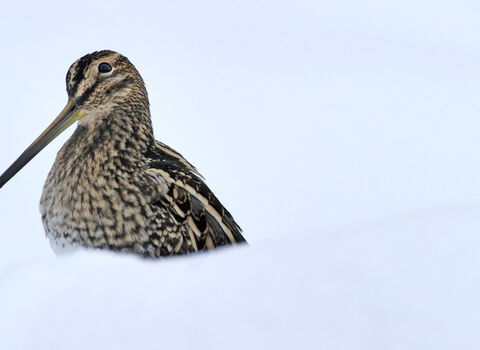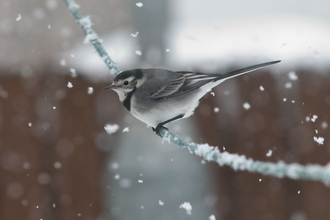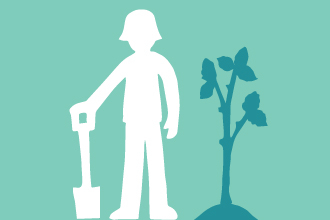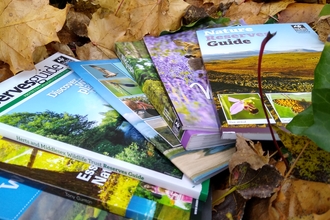We often dream of a white Christmas, where a shining white blanket of snow covers the countryside, coating our roofs like the icing on a gingerbread house. We build snowmen and igloos from this wonderful white powder, or scrunch it into balls and throw it at each other. But what exactly is snow, and what does it mean for our wildlife?
What is snow?
Snow is a solid form of precipitation, basically little clumps of ice crystals that fall from the sky.
How does snow form?
When the atmospheric temperature is below freezing, water vapour in the air turns to ice. It forms around tiny particles of dirt that have been carried into the atmosphere by the wind, creating ice crystals. These tiny ice crystals stick to each other, producing snowflakes. When enough ice crystals stick together, the snowflakes become heavy enough to fall.
If the snowflakes pass through air warmer than 2 °C on their way to the ground, they start to melt and become either sleet or rain. If they fall through moist air that’s between zero and 2 °C, then they stick together and form the classic large, fluffy snowflakes. If they fall though cold, dry air then the snow will be more powdery.
How does snow affect animals?
The wildlife in the UK is used to dealing with cold winters. Some species handle the drop in temperature by hibernating or going into a state of torpor. Their metabolism slows down and their temperature drops, so they need less energy to survive. Animals that hibernate include hedgehogs and dormice.
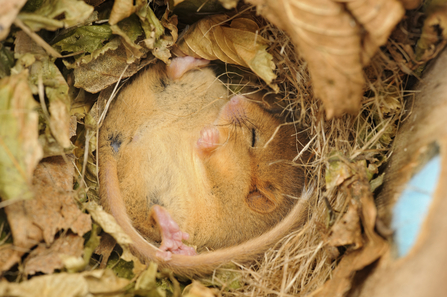
Hazel dormouse ©Terry Whittaker/2020VISION
Other species collect and store lots of food in autumn, so they have supplies to eat in winter when food is harder to find. Squirrels are famous for storing nuts, but other animals that cache food include jays, nuthatches and coal tits. In autumn, you might spot jays flying with their mouths full of acorns, or coal tits visiting bird feeders and carrying away seeds to hide.
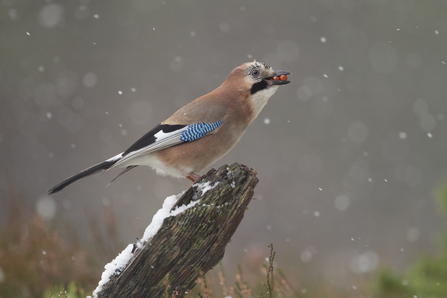
Jay ©Peter Cairns/2020VISION
Heavy snow can make it even harder for animals to find food, so you might get a lot more birds visiting your garden feeding station. Other animals, like foxes, may be forced to travel farther to find food. The problems for our wildlife really start if cold spells and snow continue through later winter into early spring, as the longer these conditions last the harder it becomes to survive.
Mountain hares actually rely on snow. They have brown fur in summer, but as winter approaches they grow a white coat of fur to help them camouflage in the snow that covers their highland homes. If there is no snow, the bright white hares are more easily spotted by predators.
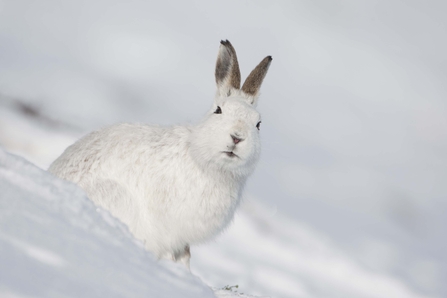
Mountain hare ©Mark Hamblin/2020VISION
How can we help wildlife in winter?
Although our wild neighbours have adapted to cold winters, it’s still an extremely difficult time for them. There are a few things we can do to help them survive until spring.
- Provide food for garden birds
Small birds need to eat a lot to survive in cold weather, feeding all day to make sure they have enough fat reserves to get through the long, cold night. Food can be hard to find, especially in the snow, so give them a hand by keeping your feeders topped up. We’ve got lots of advice on feeding birds in your garden.
- Provide shelter
A bird box isn’t just a great place to raise chicks, it can also be a cosy bedroom on a cold winter night. Lots of small birds like to roost in bird boxes during winter, where they’re slightly warmer and protected from the bad weather. Some species, like blue tits, may roost on their own. Other birds, like wrens, sleep in groups to stay warm - 61 wrens have been recorded sharing a single box!
Check out our guide to building your own bird box.
You can plan ahead for next winter by adding shelters for other wildlife: add a hedgehog hideaway for hibernating ‘hogs, or a hibernaculum for reptiles and amphibians. On mild winter days, these animals sometimes emerge to feed and find a new place to settle down, so your shelters may even get used this year.
- Provide drinking water
It can be hard for animals to find drinking water in cold weather, when pools and streams freeze over. Putting out a shallow bowl of fresh water and keeping birdbaths ice-free can help birds and mammals survive when everything else is frozen. Breaking the ice on your pond can also provide a place to drink.
Don’t use force or pour on boiling water to break the ice - instead, carefully place a pan of boiling water on the surface to melt the ice below.

